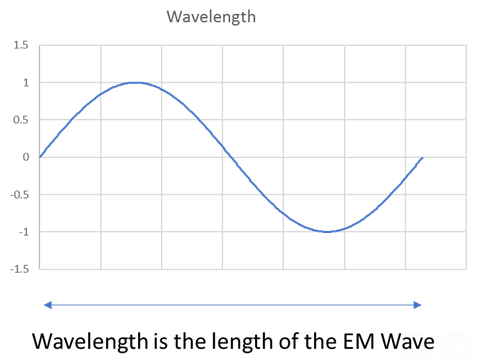from State Of The Nation:
 Radiofrequency/Microwave/Millimeter-Wave Engineer Explains Hard Science Behind the Propagation of 5G into the Human Body & Offers Mitigation Advice
Radiofrequency/Microwave/Millimeter-Wave Engineer Explains Hard Science Behind the Propagation of 5G into the Human Body & Offers Mitigation Advice
SOTN Editor’s Note: Our readership has been waiting for this conclusive exposé since the nationwide 5G roll-out was first announced years ago. Truly, it doesn’t get any more compelling and authoritative than the following revelations about 5G and how it really affects the human body.
TRUTH LIVES on at https://sgtreport.tv/
This scientific breakdown is only the first in a series of highly consequential disclosures made by an industry deep insider who is currently working as a credentialed Radiofrequency/Microwave/Millimeter-Wave Engineer (for 25-plus years). Hence, this excellent introduction to 5G science is as accurate as the graphic depiction of the effects of 5G technology on the human body which follows.
All anti-5G activists are also highly encouraged to read this very simple explanation from an Integrative Health Consultant who treats many clients for EHS (Electro-Hypersensitivity Syndrome).
Adverse Effects of Wireless Technology
on the Human Bio-electrical Field
State of the Nation
February 5, 2024
Can 5G cause flu-like symptoms and can it be used to activate the Coronavirus?
Submitted by a Radiofrequency/Microwave/Millimeter-Wave Engineer
Before we begin, let’s look at what 5G is. 5G is the fifth generation of cellular communications. 1G was deployed in the 1980’s and it was those old-school phones that only very wealthy people had. These phones were about 6” x 6” x 12”, plus or minus a few inches. Many of the people who used these phones a lot had a region in their brain the size of a walnut that had been literally cooked. 2G came after that. 3G is the old-school flip phones from the early 2000’s, then 4G and 4G LTE came along. 5G is the next generation of cellular communications that is rolling out worldwide. 4G LTE offers 10s of Megabits per second (Mbps) where as 5G offers 100s of Mbps and into the Gigabits per second (Gbps). What does this get you? You are now able to stream high-resolution video over your cellular network.
There are multiple variants of 5G being deployed around the world. 5G in China has the data encoded on a 28 GHz microwave carrier. 5G in Europe is supposed to operate on a 28 GHz carrier. Verizon wants to be like the rest of the world and operate at 28 GHz. The FCC recently auctioned off 37 GHz, 39 GHz and 47 GHz for use in 5G applications. AT&T wants to operate on 39 GHz. T-Mobile has launched their version of 5G on a 400 MHz carrier.
You are probably confused by all of this and there is solid engineering rationale behind all of this. Let’s start with a simple calculation, wavelength and what wavelength is for some common radiofrequency, microwave and millimeter-wave frequencies.
λ = v/f
λ = Wavelength
v = speed of light in vacuum = 3 x 108 meters/s
f = frequency
Example 1:
Determine the wavelength at 400 MHz.
λ = v/f = 3 x 108 m/s / 400 x 106 Hz = 0.75 meters = 29.5 inches
Example 2:
Determine the wavelength at 850 MHz (Cellular).
λ = v/f = 3 x 108 m/s / 850 x 106 Hz = 0.353 meters = 13.9 inches
Example 3:
Determine the wavelength at 1.5 GHz (Global Positioning System or GPS).
λ = v/f = 3 x 108 m/s / 1.5 x 109 Hz = 0.2 meters = 7.87 inches
Example 4:
Determine the wavelength at 2 GHz (Close proximity to many 4G LTE Bands).
λ = v/f = 3 x 108 m/s / 2.0 x 109 Hz = 0.15 meters = 5.9 inches
Example 5:
Determine the wavelength at 2.45 GHz (WiFi, first resonant frequency of a water molecule/ operating frequency of a microwave oven).
λ = v/f = 3 x 108 m/s / 2.45 x 109 Hz = 0.122 meters = 4.8 inches
Example 6:
Determine the wavelength at 5 GHz (WiFi upper band).
λ = v/f = 3 x 108 m/s / 5 x 109 Hz = 0.06 meters = 2.36 inches
Example 7:
Determine the wavelength at 14 GHz (Approximate Satellite TV and Internet).
λ = v/f = 3 x 108 m/s / 14 x 109 Hz = 0.021 meters = 0.843 inches
Example 8:
Determine the wavelength at 28 GHz (5G in China, Europe, Verizon).
λ = v/f = 3 x 108 m/s / 28 x 109 Hz = 10.7 millimeters = 0.421 inches
Example 9:
Determine the wavelength at 39 GHz (AT&T 5G).
λ = v/f = 3 x 108 m/s / 39 x 109 Hz = 7.7 millimeters = 0.303 inches
Example 10:
Determine the wavelength at 60 GHz (WiFi, Unlicensed Frequency Band).
λ = v/f = 3 x 108 m/s / 60 x 109 Hz = 5 millimeters = 0.303 inches
Example 11:
Determine the wavelength at 90 GHz (Crowd Control machine that makes skin feel like it’s on fire).
λ = v/f = 3 x 108 m/s / 90 x 109 Hz = 3.3 millimeters = 0.13 inches
image.png

What is wavelength? It is the length of the electromagnetic wave. From examples 1 through 11, we can see that as we increase frequency the wavelength gets smaller. In general, the longer the wavelength the deeper it will penetrate into your body. The shorter the wavelength the less it will penetrate. 90 GHz penetrates to a depth that makes your skin feel like it’s on fire. T-Mobile’s 400 MHz 5G has a long wavelength that will penetrate very deep into your body. Everything else is somewhere in between. Human blood is very good at converting radiofrequency, microwave and millimeter waves into heat. This is the basic premise on which many medical devices work.
Read More @ StateOfTheNation.co




